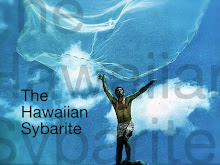
The buzz is officially out, and Civil Beat's moment has arrived.
Honolulu became a one-horse town this month, or rather a one-newspaper town, after the "merger" of the Honolulu Advertiser and the Honolulu Star-Bulletin. We suspect that the death of the Advertiser was the opportunity that eBay founder and Hawaiʻi resident Pierre Omidyar had been praying for, and he launched his oft-whispered-about news service, Honolulu Civil Beat, at almost the exact same time as the Advertiser's shuttering.
Civil Beat has (so far) got the plot mostly right. They aren't attempting to capture breaking news stories; readers can get that information from large news organizations or from Civil Beat's correspondents' Twitter feeds. Instead, Civil Beat intends to differentiate itself from its competition by the increased depth and duration of its reportage. Whereas other news organizations relay to their audiences a one-way report on discrete stories, the Civil Beat journalists discuss specific topics over a longer term with website users.
And discuss, they do.
Those Civil Beat readers who would like to gain full access to the all the website's features will have to pay a $19.99 monthy fee (amazingly, via PayPal), but once they do, they will be able to participate in Civil Beat's discussions ad infinitum.
We think that this is a very clever move. News outlets must have discussion forums; it keeps the audience engaged and steers them away from the dangerously democratic world of the Blogosphere, where things could, at any moment, spin completely out of control when people decide to start thinking and analyzing for themselves. The problem so far with most such discussion forums is that the anonymity of internet posting allows participants to post writings that would never be fit for conventional printing. Often, and particularly with issues related to identity political issues, the conversations become little more than 10th-grade vain-little-girl/plain-little-girl, ad-hominem hissyfits.
Honolulu Civil Beat has wisely taken steps to solve that problem by charging for access and by collecting the fee via PayPal. Firstly, the price alone will deter many would-be undesired posters but more importantly, paying via PayPal will likely identify someone responsible for the user's account. What's more, real names are used on Civil Beat's website, and these factors have, at least so far, gone far to engender a civil atmosphere suitable to the website's mission.
We still have questions about charging $19.99 for online news. Everybody does, though. Honolulu Civil Beat's greatest challenge is, in our eyes, that nobody expects to pay for news content online. We also have questions about the website's lack of visual interest (where are the arresting photographs?) and still sparse content. And also, why isn't Catherine Toth on the Civil Beat staff? She is, after all, Honolulu's Best Journalist.
We do have faith in Pierre Omidyar. He knows the internet—he's a true pioneer—and we assume that he's at least several steps ahead of us. As for us, though—we're not subscribing yet. It'd be money wasted, because we would be banished from Civil Beat in a matter of days since we wouldn't hesitate to voice our opinion that Linda Lingle is a "despicable, old hag."






















